A most enjoyable way to reduce clutter in your inbox
Back in the days before email (hard to imagine I know!) when I worked as a consultant for various time management companies, I coached workshop participants on how to organise and manage their desk and surrounding area.
We would discuss ABC zones in their work space where;
The ‘A’ zone was within arm’s reach of your sitting position and reserved for items that are used continuously through the day (e.g. phone, pens, keyboard, mouse)
The ‘B’ zone was where you had to stretch to reach items used occasionally during the day (e.g. stationery, in-tray, notepad)
The ‘C’ zone was where you had to move or get out of your chair to reach items that are rarely accessed (e.g. filing cabinet or bookshelf).
One of the frequently asked questions was about where to store papers and documents that weren’t worth adding to the filing system with but also weren't yet ready to discard.
So where do you put such papers and documents? Usually these would be kept in a file or a pile on their desk that would rarely be touched again.
The solution for this was to create what we called a ‘D’ Box to store these miscellaneous papers. The way this worked best was to buy a dozen bottles of wine (back in the days when wine only came in dozen boxes, not like today when they are all in half dozen boxes) and then drink the wine and the empty box was the perfect size for an A4 size piece of paper!
This empty box would go under the desk and all those miscellaneous bits of paper would go into it. At any time, you could search back through the ‘D’ box (where the papers are stored in reverse date order) to find a particular piece of paper that you didn't need previously but are now glad you are able to retrieve
Over a period of time, the ‘D’ Box would become full and you would then take a handful of papers from the top of the box and place in the bottom of a new ‘D’ Box (a good reason to buy and drink another half dozen bottles of wine!). The old ‘D’ Box could then be archived or thrown out.
This same idea can be used for email. The Deleted Items folder can nicely serve the same function as the ‘D’ Box.
However, many people are reluctant to delete email, just in case they’ll need it later, and so they leave it in the inbox, causing clutter and distraction.
I'm here to let you know, you can delete a lot more email than you might think, safe in the knowledge that if you ever need to refer to an individual email, it's still in the Deleted Items folder. Effective use of the Search function will make the process of retrieving an email simple.
Most older papers or, in this case emails, that you need will usually only be needed in the next 3 weeks to 3 months. Rather than leave these to clutter up the inbox, you can happily move them to the Deleted Items folder because their life span is fairly short. The Deleted Items folder can then be emptied/archived when each item reaches a date, after say 3 or 6 or 12 months.
Why not give this idea a try over coming weeks?
And, if there's anything else I can do to help you or your team to get control email, don't hesitate to contact me direct - whatever I can do, I'm here to help!
